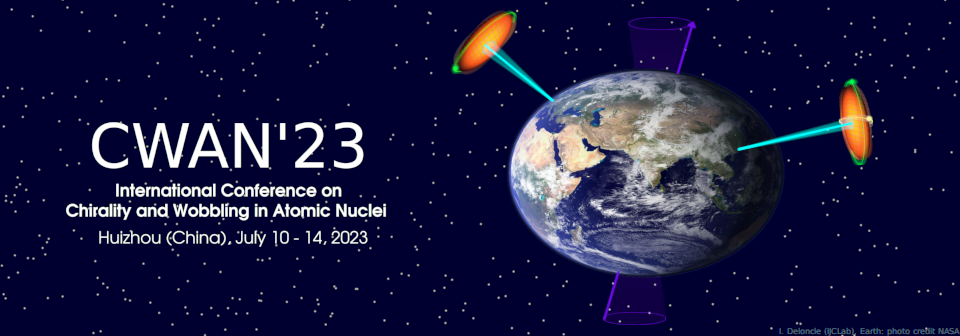Présidents de session
Session: 1
- Pengwei Zhao (Peking University)
Session: 2
- Costel Petrache (IJCLab Orsay)
The breaking of symmetries in quantum systems is one of the key issues in nuclear physics. In particular, the spontaneous symmetry breaking in rotating nuclei leads to exotic collective modes, like the chiral and wobbling motions, which have been intensively studied in the last 25 years. Chiral bands have been identified in several mass regions of the Segrè chart of nuclei, and their...
Experimental study of the nuclear chiral symmetry resembles the Schroedinger's cat problem where the direct observation of an object, here its handedness, is prohibited within the todays experimental methods. The nuclear chirality measurements are thus limited to indirect observables related to states superimposed over unobserved values. Such superpositions are built of the same amount of...
The concept of wobbling excitations of the rigid triaxial rotor is introduced by means of the topology of its classical orbits. The quantum-mechanical restrictions on the moments of inertia are discussed. The consequences of γ softness for the spectroscopic signatures are addressed and the available experimental examples for wobbling excitations based on the ground bands of even-even nuclei...
The concept of chirality in atomic nuclei was first proposed in 1997 and has been extensively investigated for the past decades. In this talk, the theoretical efforts on nuclear chirality are reviewed. Recent progress including the early appearance of the chiral rotation induced by superfluidity, the microscopic dynamics of chiral excitations, Chirality-Parity (ChP) violation, collective...
Most investigations of collective excitations in medium-heavy and heavy nuclei are based on nuclear density functional theory. These methods allow the description of the interplay between collective and single-particle motion, which is important for chirality and wobbling motion. Very successful relativistic and non-relativistic functionals are available nowadays. However, most of them are...

